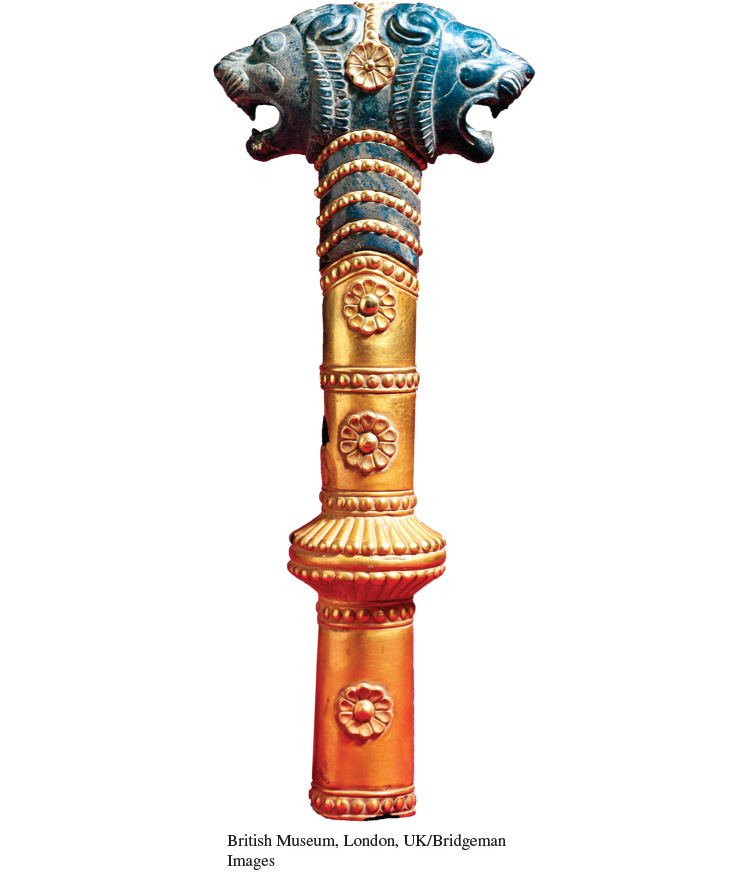A History of Western Society: Printed Page 56
A History of Western Society, Value Edition: Printed Page 52
A History of Western Society, Concise Edition: Printed Page 56
Persian Art and Culture

The Persians made significant contributions to art and culture. They produced amazing works in gold and silver, often with inlaid jewels and semiprecious stones such as deep blue lapis lazuli. They transformed the Assyrian tradition of realistic monumental sculpture from one that celebrated gory details of slaughter to one that showed both the Persians and their subjects as dignified. They noted and carved the physical features of their subjects, the way they wore their hair, their clothing, and their tools and weapons. Because they depicted both themselves and non-
These carvings adorned temples and other large buildings in cities throughout the empire, and the Persians also built new cities from the ground up. The most spectacular of these was Persepolis, designed as a residence for the kings and an administrative and cultural center. The architecture of Persepolis combined elements found in many parts of the empire, including large, elegant columns topped by carvings of real and mythical animals. Underneath the city was a system of closed water pipes, drainage canals, and conduits that allowed water from nearby mountains to flow into the city without flooding it; provided water for households and plantings inside the city; and carried away sewage and waste from the city’s many residents. The Persians thus further improved the technology for handling water that had been essential in this area since the time of the Sumerians.
The Persians allowed the peoples they conquered to maintain their own customs and beliefs, as long as they paid the proper amount of taxes and did not rebel. Their rule resulted in an empire that brought people together in a new political system, with a culture that blended older and newer religious traditions and ways of seeing the world. Even their opponents, including the Greeks who would stop their expansion and eventually conquer the Persian Empire, admired their art and institutions.
